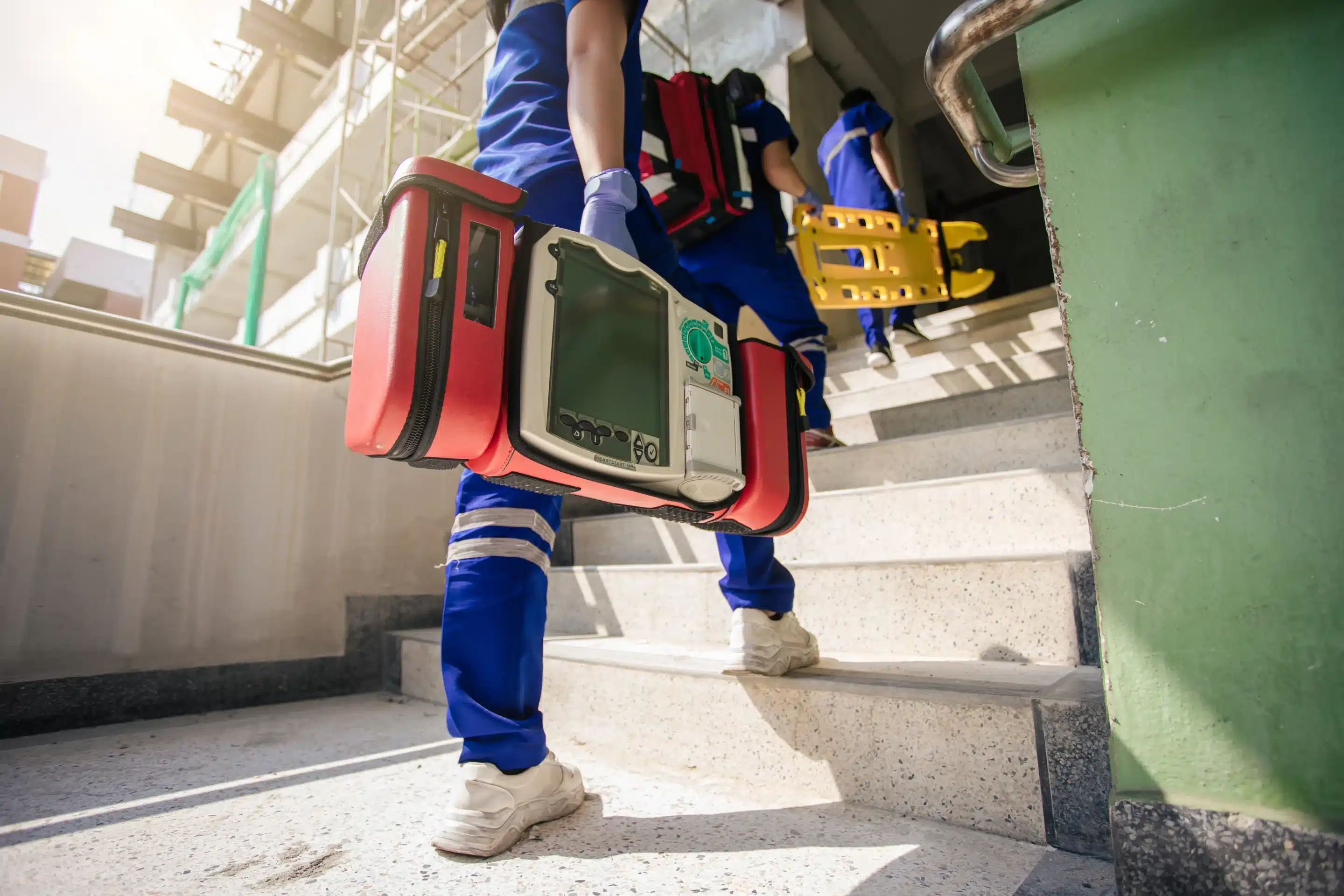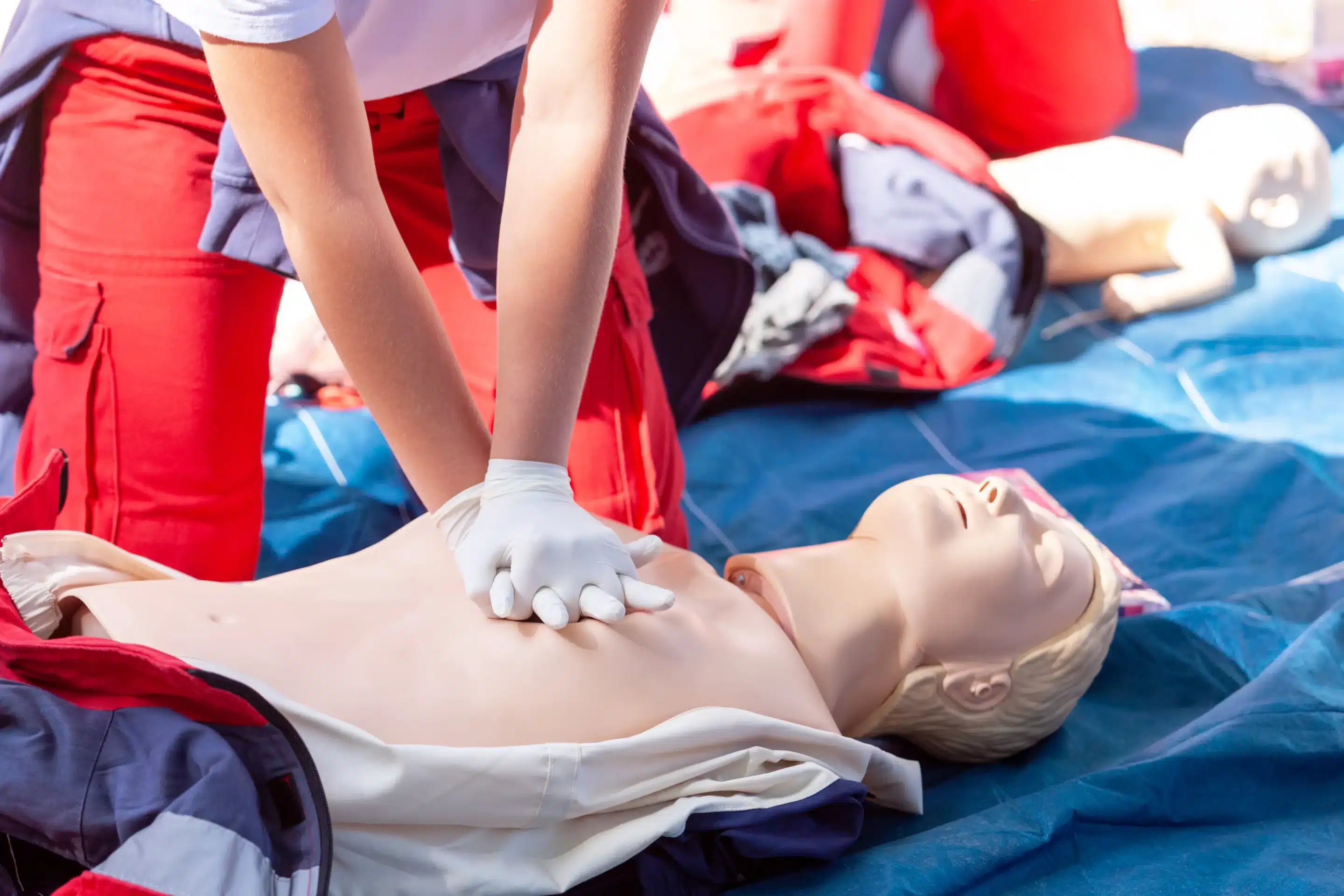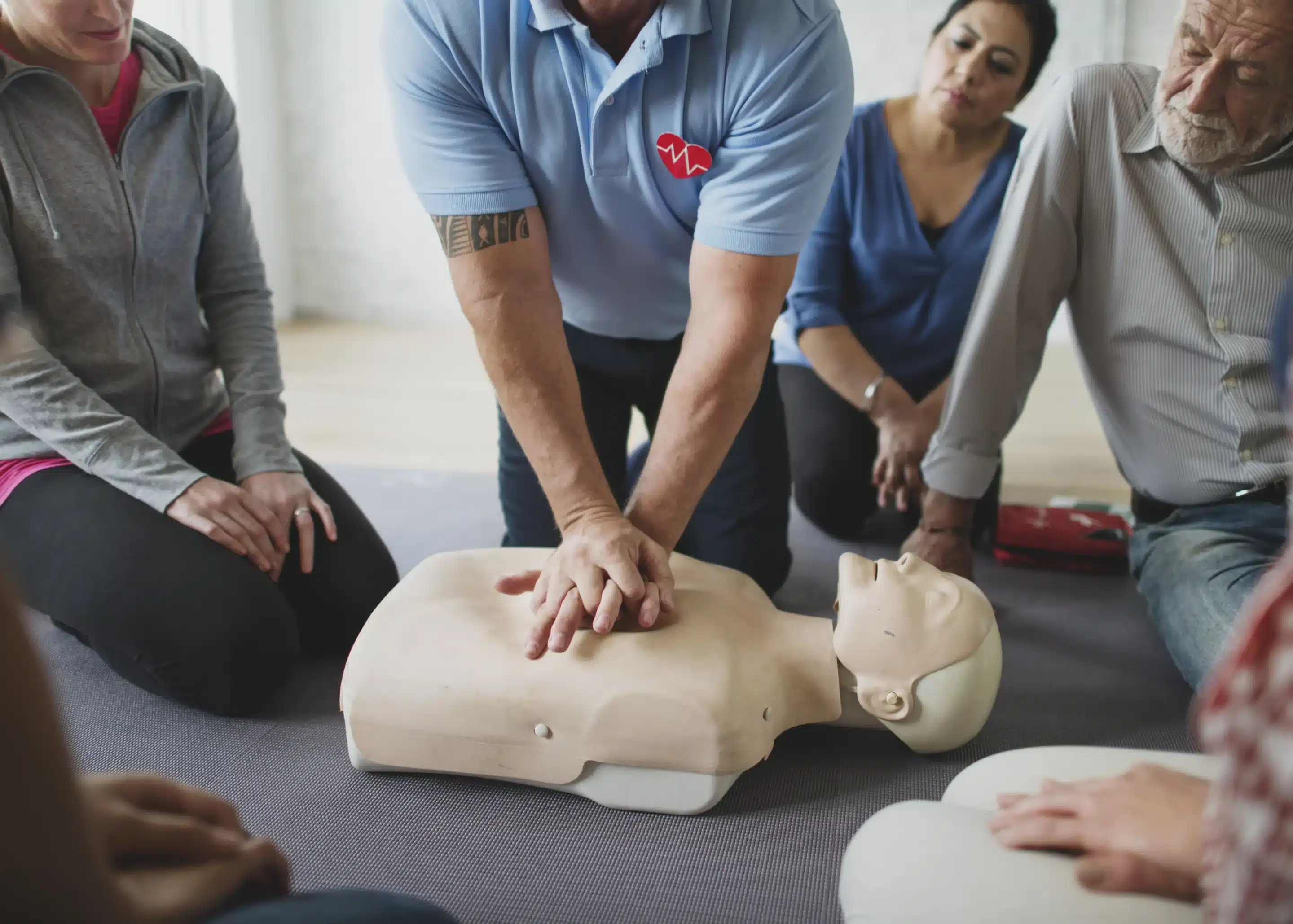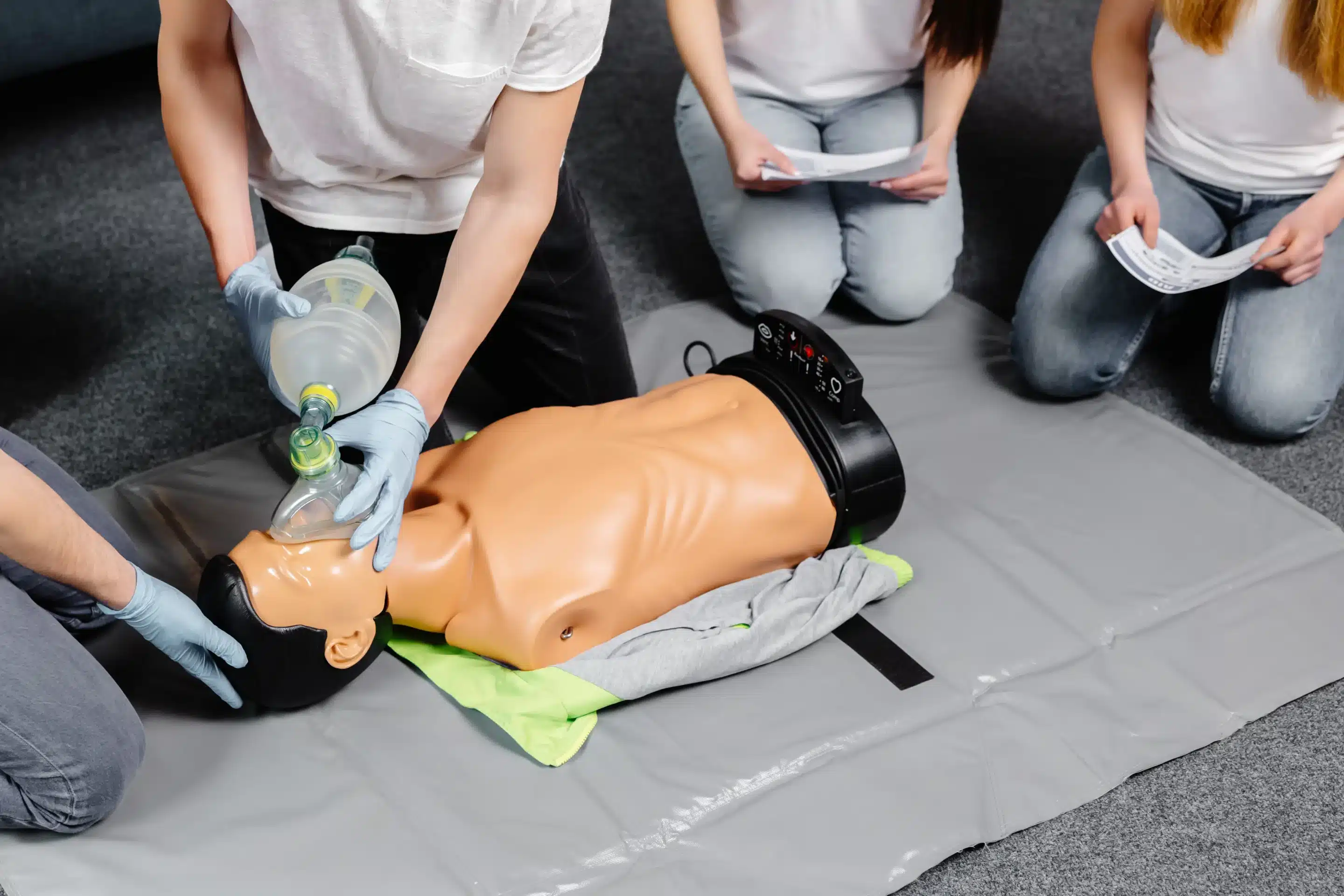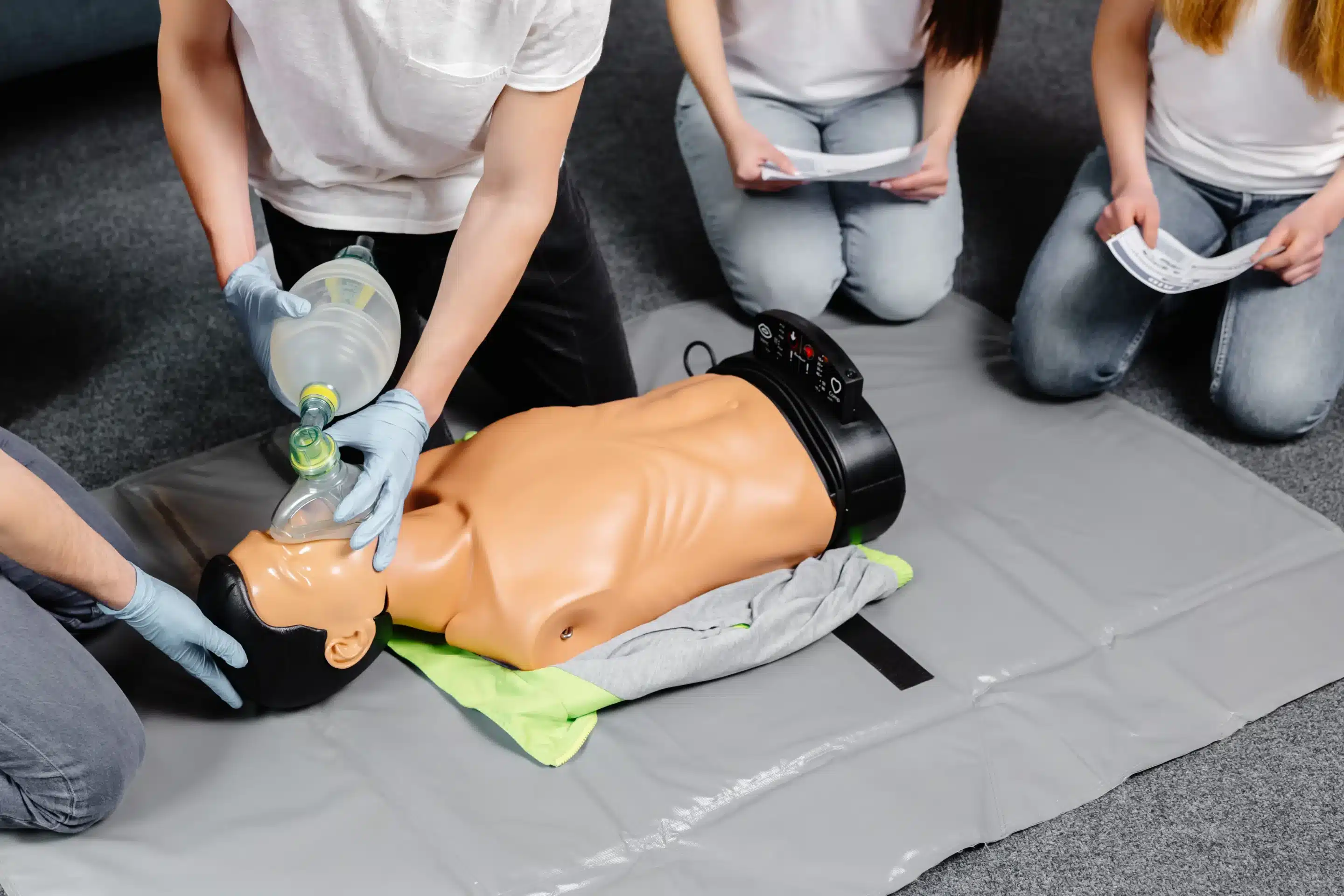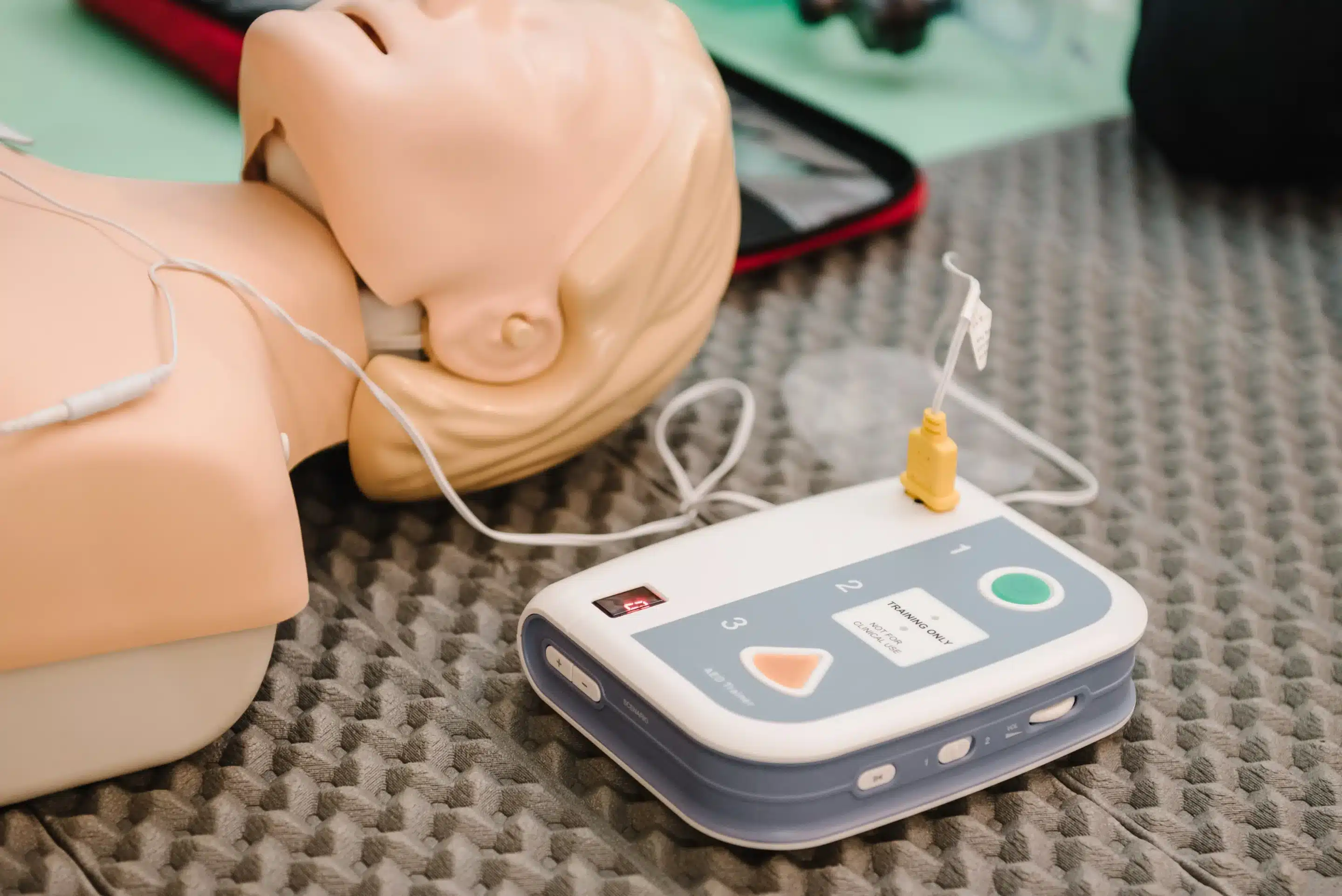Emergencies can happen anytime, anywhere. Are you ready to respond? BLS training gives you the skills and confidence to provide critical care in those crucial moments. This guide covers everything from the basics of BLS to finding “BLS classes near me.” We’ll explore the different training options available, discuss the cost and time commitment involved, and help you choose the right BLS provider. Whether you’re a healthcare professional or want to be prepared for anything, this guide will help you on your path to becoming BLS certified.
Key Takeaways
- BLS is more than just CPR. It equips you with comprehensive skills to handle various medical emergencies, from cardiac arrest to obstructed airways. Consider BLS training a crucial toolkit for anyone in healthcare or wanting to be prepared for emergencies.
- Flexible learning options make BLS certification accessible to everyone. Whether you prefer in-person instruction, online convenience, or a blended approach, you can find a course that fits your lifestyle. Explore various providers and compare what they offer to find the best fit.
- Investing in BLS training is an investment in yourself and your community. Compare costs and explore payment options to find a program that works for your budget. Remember that recertification is required, so plan accordingly to maintain your valuable skills.
What is BLS?
Basic Life Support (BLS) is a critical healthcare certification focused on providing immediate care during life-threatening emergencies. These emergencies can range from cardiac arrest and respiratory distress to choking. BLS is more than just CPR; it equips healthcare providers with the skills to respond effectively in high-pressure situations. It emphasizes teamwork, high-quality CPR, and ensuring the best possible outcome for the patient. It’s important to understand exactly what BLS entails, as there are some common misconceptions about BLS certification.
What does BLS training cover?
BLS certification programs cover a range of life-saving techniques. You’ll learn how to perform high-quality CPR for adults, children, and infants, including chest compressions and rescue breaths. The training also covers the proper use of an automated external defibrillator (AED), a portable device that can help restore a normal heart rhythm. BLS training also teaches basic airway management techniques, such as how to relieve choking.
Why is BLS important?
BLS is essential for anyone working in healthcare. It provides the foundational skills needed to respond to emergencies and stabilize patients until more advanced medical help arrives. A solid understanding of BLS principles can significantly improve patient outcomes, especially in cases of cardiac arrest or respiratory failure. Dispelling myths about BLS is crucial for healthcare providers wanting to improve their skills and confidently handle emergencies. For healthcare providers, BLS certification is not just a credential—it’s a commitment to providing the highest quality of care.
BLS vs. other CPR certifications
While both BLS and CPR certifications teach life-saving techniques, key differences exist. CPR certification focuses primarily on chest compressions and rescue breaths for individuals experiencing cardiac arrest. BLS certification is more comprehensive. Designed for healthcare professionals and first responders, it includes CPR training plus additional techniques for managing cardiac arrest, respiratory distress, and obstructed airways. The American Red Cross offers a helpful comparison of BLS and CPR certification. BLS certification is often a requirement for healthcare professionals, while CPR certification is suitable for a broader audience, including teachers, coaches, and community members. If you’re considering which certification is right for you, think about your current role and future career goals within the healthcare field.
Find BLS Classes Near You
Finding the right BLS class is easier than you think. With various learning formats available, you can choose the option that best fits your schedule and learning style. Let’s explore the different ways you can become BLS certified.
In-Person BLS Classes
Traditional in-person BLS classes offer a structured learning environment with direct interaction with an instructor. These classes provide hands-on training and allow you to practice skills in real-time, ask questions, and receive immediate feedback. For those who thrive in a classroom setting and value face-to-face instruction, in-person training is an excellent option. Bakersfield CPR Classes offers in-person BLS training with same-day certification.
Online BLS Certification
Online BLS certification courses offer flexibility and convenience. You can complete the coursework at your own pace, anytime, anywhere. This format is particularly helpful for those with busy schedules or limited access to in-person classes. While the online portion covers the theoretical aspects of BLS, you’ll typically still need to complete an in-person skills session to receive your certification. Our online BLS course offers a convenient way to learn BLS fundamentals.
Blended Learning BLS
Blended learning combines online learning and in-person skills practice. You’ll complete the cognitive portion of the course online, then attend a shorter in-person session to demonstrate your skills and receive your certification. This approach offers flexibility while ensuring you get the hands-on experience necessary for real-life emergencies. The American Red Cross is one organization that offers blended learning BLS courses.
Hands-on BLS Workshops
Hands-on BLS workshops prioritize practical skills development. These workshops often feature small group sizes, allowing for personalized attention from instructors and ample opportunities for practice. This immersive approach helps build confidence and reinforces essential life-saving techniques. Bakersfield CPR Classes offers hands-on BLS workshops with same-day certification.
BLS Certification: Cost, Duration, and Renewal
Getting BLS certified is a smart move, but it’s natural to have questions about the investment. Let’s break down the typical costs, time commitment, and how long your certification is valid.
How much do BLS classes cost?
BLS certification costs vary. The biggest factors? Whether you choose a hybrid course, a fully online course, or an in-person class. In-person training, like at Bakersfield CPR Classes, often includes perks like same-day certification cards. Do some research and compare what different training options include and their prices. Contacting providers directly to ask about course details and fees is always a good idea. Knowing what’s included helps you make an informed choice.
How long does BLS training take?
BLS training typically takes anywhere from one to five hours. A traditional, instructor-led course usually takes about four or five hours. Blended learning courses, which combine online modules with shorter in-person skills sessions, can be more time-efficient, taking about one to three hours total. This blended learning format works well for busy schedules. Some providers even offer accelerated programs that cover the essentials, if you need the quickest option.
How long is BLS certification valid?
BLS certification is generally valid for two years. You’ll need to take a recertification course to stay up-to-date after that. Many providers, including the American Red Cross, offer these renewal courses. Put a reminder on your calendar so you don’t forget!
BLS Certification Discounts
While cost is a factor, BLS certification is an investment in your skills. Many providers offer discounts for groups, students, or organizations. Some also have payment plans to make training more affordable. Explore the options and find a program that works for you. The benefits of BLS certification are worth the upfront cost.
Who Needs BLS Training?
Healthcare Professionals and First Responders
BLS certification is essential for healthcare providers like nurses, doctors, paramedics, and other first responders. These professionals are usually the first on the scene during a medical emergency, so they need the skills to provide immediate care. Think of BLS as their essential toolkit for handling cardiac arrest, strokes, and other life-threatening situations. It equips them to provide crucial support until more advanced medical help arrives. For anyone working in healthcare or emergency response, BLS training isn’t just recommended—it’s often a job requirement. Many hospitals and healthcare organizations require their staff to maintain current BLS certification from a recognized provider like the American Heart Association or the American Red Cross.
BLS for Everyone Else
Even if you’re not a medical professional, knowing BLS can be incredibly valuable. It empowers you to respond effectively during emergencies at home, work, or in your community. BLS training gives you the confidence to step in and potentially save a life when every second counts. Think of it as a vital life skill, much like knowing how to swim or change a tire. While we hope we never have to use these skills, they’re invaluable when needed. Learning BLS can make you a more prepared and confident member of your community. It also encourages a culture of preparedness and can inspire others to learn these lifesaving skills. You never know when you might be in a position to help.
Common BLS Misconceptions
A few common misconceptions about BLS training might prevent people from getting certified. One myth is that it’s only for medical professionals. This isn’t true. BLS skills are valuable for anyone. Another misconception is that BLS training takes up too much time. Many courses are designed to be efficient and fit busy schedules. Some people believe BLS certification is expensive, but the cost is often manageable, especially considering the potential benefits. And remember, BLS certification isn’t a one-time thing; you’ll need to recertify periodically to keep your skills current. This ensures you’re always prepared to respond effectively in a crisis.
Choosing a BLS Provider
Finding the right BLS provider means considering several factors to ensure you receive high-quality training that fits your needs and schedule. Let’s break down what to look for and explore some leading providers.
What to look for in a BLS provider
When selecting a BLS provider, think about your priorities. Convenience is often key, and online certification courses offer a flexible way to learn without travel. Cost is another important factor, so compare pricing to find a course that fits your budget. Also, consider the provider’s reputation and whether they offer the right type of BLS certification—for healthcare providers or the general public. Finally, check if the provider offers continuing education or renewal options. Some providers may require proof of prior CPR training, so factor that into your decision.
Accreditation and Recognition
Accreditation ensures your BLS certification meets established standards. Look for providers accredited by reputable organizations like the American Heart Association (AHA). AHA BLS courses are designed for various healthcare professionals and are often a requirement for healthcare jobs (AHA BLS Training). This recognition demonstrates a commitment to quality training.
Class Schedules and Flexibility
Your schedule shouldn’t prevent you from getting BLS training. Many providers offer various class formats, including in-person, online, and blended learning (a mix of online and in-person sessions) (Blended Learning CPR). Choose the format that best suits your learning style and availability. Online or blended learning might be more convenient for busy schedules. Weekend or evening classes can also work well for those with daytime commitments. Look for a provider that offers the flexibility you need.
Top BLS Class Providers
Several organizations offer excellent BLS training. Here are a few reputable options:
American Heart Association (AHA)
The AHA is a leader in CPR and BLS training. They offer comprehensive courses for healthcare professionals, covering essential life support skills (AHA BLS).
American Red Cross (ARC)
The ARC is another trusted source for BLS certification. Their courses meet national standards and are widely accepted (ARC BLS).
National Safety Council (NSC)
The NSC offers various safety training programs, including BLS certification, for different audiences (NSC Training).
ProTrainings
ProTrainings emphasizes practical skills and real-world applications, with online and in-person BLS training options (ProTrainings BLS).
Health & Safety Institute (HSI)
HSI provides comprehensive BLS training programs recognized across many industries (HSI BLS).
Bakersfield CPR Classes
Bakersfield CPR Classes offers local BLS training with flexible scheduling and same-day certification in Bakersfield and Kern County (Bakersfield CPR Classes BLS). They are a convenient choice for busy professionals seeking AHA-compliant training.
Related Articles
- BLS Courses in Bakersfield: The Ultimate Guide – Bakersfield CPR Classes
- BLS Training Near Me: Your Complete Guide – Bakersfield CPR Classes
- BLS Certification Bakersfield: Your 2024 Guide – Bakersfield CPR Classes
- Basic Life Support (BLS) Classes in Bakersfield – Bakersfield CPR Classes
- BLS for Healthcare Providers in Rosedale: A Guide – Bakersfield CPR Classes
Frequently Asked Questions
Is BLS certification the same as CPR certification? While both teach life-saving skills, BLS certification is more comprehensive than standard CPR certification. BLS covers CPR techniques but also includes training on using an AED, relieving choking, and other essential skills for healthcare providers. CPR certification focuses primarily on chest compressions and rescue breaths.
How long does it take to get BLS certified? The time commitment for BLS certification varies depending on the course format and provider. Traditional in-person classes typically last four to five hours. Blended learning courses, combining online modules and shorter in-person skills sessions, can range from one to three hours. Some providers also offer accelerated programs for those needing the quickest option.
How much does BLS certification cost? The cost of BLS certification depends on several factors, including the training provider, course format (online, blended, or in-person), and location. It’s always a good idea to contact providers directly or check their websites for specific pricing information. Don’t hesitate to ask about any included materials or additional fees.
Where can I find BLS classes near me? Several organizations offer BLS classes, including the American Heart Association, American Red Cross, and local training centers. You can often find classes by searching online for “BLS classes near me” or checking the websites of these organizations. Consider factors like location, schedule, and cost when choosing a provider. Local providers like Bakersfield CPR Classes offer convenient options for those in Bakersfield and Kern County.
How often do I need to renew my BLS certification? BLS certification is typically valid for two years. To maintain your certification and stay up-to-date on the latest guidelines, you’ll need to complete a recertification course before your current certification expires. Most providers offer renewal courses, so check with the organization that issued your original certification.



